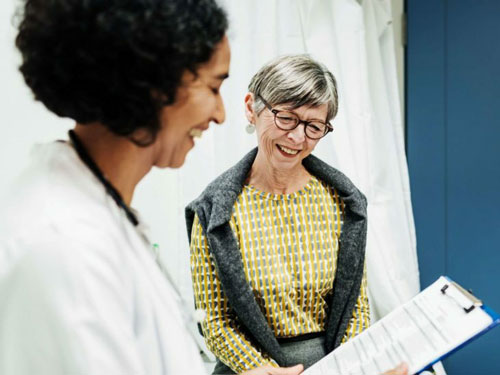SCIENTISTS have embarked on re
newed investigations into andro
gen therapy — a former breast cancer treatment. Recent research in mice shows that it may help block tumor growth.
As the American Cancer Society report, breast cancer is one of the most common forms of the disease among women. It can be very aggressive and is responsible for the second-highest number of cancer deaths in this population.
Scientists continue to search for methods of prevention and treatment. The latest investigation indicates that a decades-old treatment ultimately considered more harmful than helpful may, in fact, be instrumental in suppressing breast cancer tumors.
Researchers estimate that almost 2 million people in the United States were diagnosed with cancer in 2020. Around 15% of those cases were invasive breast cancer.
This form can grow into surrounding tissue, while the noninvasive form stays within the milk ducts or lobules of the breast and is thus easier to treat.
There is a 1 in 8 chance that a woman in the U.S. will be diagnosed with breast cancer, and 1 in 39 women die from this form of the disease.
The breast cancer death rate in women under 50 has not changed much in recent years, while the rate in older women has decreased by 1%.
If noninvasive breast cancer is detected early, there is a 99% chance of the person living for at least another 5 years. If the cancer has spread to a distant area, this estimate drops to 27%.
Males and females both have androgens and estrogen, two types of hormones. These hormones are instrumental in physical development.
Androgen levels are higher among males than females, and they largely influence a male’s sexual development. If levels of estrogen are too high, it can cause problems such as sexual dysfunction.
Females have higher levels of estrogen than males. As puberty approaches, the ovaries produce more estrogen, causing characteristic physical changes, including breast development.
Estrogen plays what some specialists describe as a “major role” in contributing to the development of breast cancer.
There are multiple types of breast cancer, including ER-positive breast cancer. The name indicates that estrogen is a factor in the growth of cancer cells. The majority of breast cancer cases are ER-positive. Among the present treatment options are surgery to remove the cancerous tumor, chemotherapy, radiation therapy, and hormone therapy. The latter is typically used to reduce estrogen levels.










